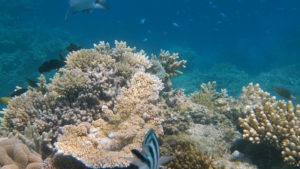2017 is shaping up to be a huge year for travel, and almost one-third of Americans have said they’re more likely to take a break this year compared to last year. And with this increase has come a rise in what experts are calling “Last Chance Tourism” over the past few years.
What is Last Chance Tourism?
Researchers Karen McNamara and Annah Piggott-Mckellar from the University of Queensland in Australia define last chance tourism as a niche tourism market, and say it focuses on “experiencing and witnessing a place before it disappears”. Unfortunately, the catch-22 of this is that the tourists who are scrambling to visit these particular places before they’re gone are actually contributing to the destruction of those same places.
The researchers spent a year collating data from some of the 2 million visitors who flock to the Great Barrier Reef each year. Many people are aware that this breathtaking site is suffering from coral bleaching thanks to increasingly warm waters, along with coastal development, agricultural runoff, sea-level rise, dredging, and hurricanes. In fact, ecologists have predicted that by 2100, the reef is likely to suffer a complete ecosystem collapse.
And it seems that the public has gotten this memo. Almost 70% of those surveyed said their reason for visiting the reef was to see it “before it’s gone”. Unfortunately, many of these tourists are unaware of the impact that tourism has on the reef- from things like dropped anchors, reef walking, boat fuel, and both sweat and sunscreen runoff from swimmers.

The reef isn’t the only place seeing last chance tourism, with many people claiming to visit Machu Picchu after hearing about the increasing number of tour groups that are visiting and damaging the Inca Trail. And tour operators are also reporting similar cases with tourists rushing to see Antarctica’s retreating glaciers and the Arctic’s polar bears.
Piggot-McKellar has warned that the media reports that have been highlighting the key destinations that tourist should ‘see before they’re gone” also need to take the responsibility of informing those same tourists that they could potentially be doing damage by visiting them.
This doesn’t mean that you can’t visit some of these incredible places- the key is to recognize that tourists may be part of the problem- and do whatever you can to offset this. Here are a few ways you can do this:
- Book an eco tour or hotel that donates some of its profits towards the environment
- Take a tour or class that explains how the environment is being impacted- and tell others about what you learn
- Donate to an environmental cause once on the ground
- Do some volunteering while you’re there (research to find a legitimate organization)
Another great idea is to carefully consider which places to visit- many people are forgoing Machu Picchu for Angkor Wat in Cambodia or Tikal in Guatemala for example. There are many amazing places around the world, so this can also be an opportunity to get off the beaten path.





